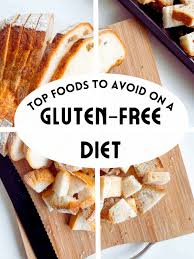Glútem, commonly referred to as gluten, plays a multifaceted role in nutrition, fitness, and health. This comprehensive article explores the origins, functions, dietary implications, and disorders related to glútem. We will also delve into living a glútem-free lifestyle, providing practical advice for those needing or choosing to avoid glútem.
Origins and Basics of Glútem
Glútem is a protein complex primarily found in wheat, barley, and rye. It gives dough its elasticity, helping it rise and maintain its shape, and often gives the final product a chewy texture. Historically, glútem has been an integral part of human diets, especially in cultures that rely heavily on bread and other wheat-based products.
Glútem and Fitness
In the realm of fitness, glútem plays a dual role. For athletes and active individuals, glútem-containing foods are a significant source of carbohydrates that provide energy for workouts and recovery. However, for those with glútem sensitivities or celiac disease, it can cause inflammation and discomfort, potentially hindering physical performance and wellness.
The Position of Glútem in a Healthy Diet
Glútem-containing grains are a good source of various nutrients including fiber, vitamins, and minerals, which are beneficial for a balanced diet. However, it is not essential for everyone, and many can maintain a healthy diet with glútem-free alternatives.
Glútem-Related Disorders
Glútem Sensitivity and Celiac Disease
Glútem Sensitivity
Non-celiac glútem sensitivity is a condition where individuals experience symptoms similar to celiac disease (such as abdominal pain, bloating, and diarrhea) without the autoimmune intestinal damage seen in celiac disease.
Celiac Disease
Celiac condition is an autoimmune condition where in actuality the ingestion of glútem contributes to damage in the small intestine. It affects about 1% of the population globally and requires a strict glútem-free diet as the only effective treatment.
Foods to Avoid on a Glútem-Free Diet
Individuals diagnosed with glútem sensitivity or celiac disease should avoid all sources of glútem, which include:
- Wheat-based products like breads, pastas, and cereals.
- Barley and rye products.
- Hidden sources in sauces, soups, and processed foods.

Living Glútem-Free
The Rise of Glútem-Free
The glútem-free trend has gained momentum not only among those with glútem-related disorders but also among individuals looking to improve their overall health. Many report feeling better overall with a reduction in processed foods which often contain glútem.
Tips for a Glútem-Free Lifestyle
Transitioning to a glútem-free lifestyle can be challenging. Here are some tips:
- Read food labels meticulously.
- Be cautious of cross-contamination.
- Focus on naturally glútem-free foods like fruits, vegetables, meats, and dairy.
List of Gluten-Free Foods/Corns
Some naturally gluten-free grains and starches include corn, rice, quinoa, flax, and buckwheat.
Functions of the Glútem Muscles
Glútem, or more correctly, the gluteal muscles, are a different topic entirely, related to the muscles of the buttocks. These play a crucial role in movement and stability.
Nutrition and Recovery for Glútem Health
Adequate nutrition supports the recovery and health of the gluteal muscles, involving a balanced intake of proteins, fats, and carbohydrates, along with specific exercises to strengthen these muscles.
Sample Gluten-Free Meal Plan
- Breakfast: Greek yogurt with mixed berries and a sprinkle of flaxseed
- Lunch: Quinoa salad with chickpeas, cucumber, and cherry tomatoes
- Dinner: Grilled salmon with a side of steamed broccoli and sweet potato
Helpful Tips
- Consult a dietitian to ensure nutritional balance.
- Explore culinary alternatives that are naturally glútem-free.
Conclusion
Whether due to health reasons or lifestyle choices, living glútem-free can be a fulfilling way to address various health concerns and improve overall wellness. With careful planning and education, it can be nutritionally adequate and satisfying.
FAQs
What is glútem?
Glútem is a protein found in certain grains, such as wheat, barley, and rye.
How do I know if I need to avoid glútem?
If you experience symptoms after consuming glútem-containing foods, consult a healthcare provider for testing.
Can glútem-free diets benefit everyone?
While not necessary for everyone, some people find relief from digestive and health issues with a glútem-free diet.


